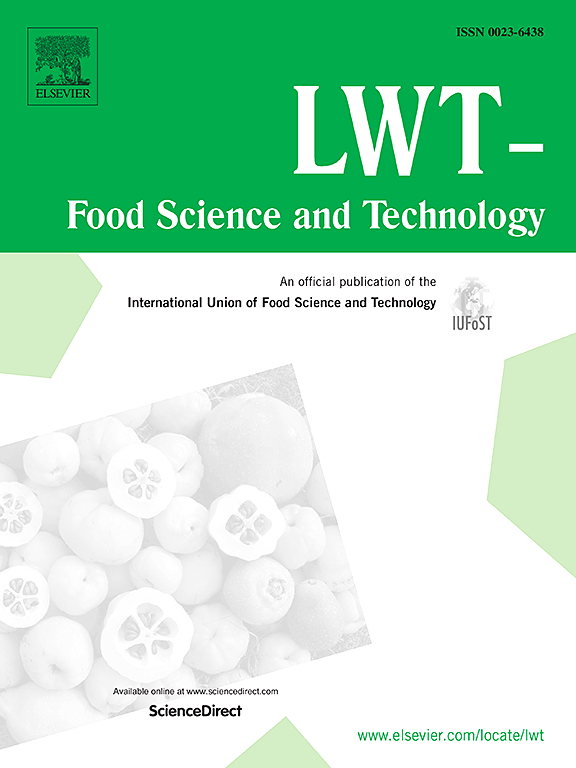Revealing the distribution pattern of soybean purine content and its influencing factors based on an ultra-micro detection system
IF 6
1区 农林科学
Q1 FOOD SCIENCE & TECHNOLOGY
引用次数: 0
Abstract
In this study, an effective method for detecting purine in soybean seeds and products by ultra-micro spectrophotometry (UMS) was established. Addition of 35 % HClO4 to 0.1 g of soybean flour and incubation in a water bath at 100 °C for 30 min and adjustment of the pH to 4 was optimal for purine hydrolysis and extraction of the total purine content of soybean seeds. No significant difference (P > 0.05) in total purine detection was observed between UMS and UPLC, and the relative standard deviation was less than 3 %, ensuring optimal precision and accuracy. Seed from 2083 soybean accessions grown in two years were analysed using UMS. Total purine content ranged from 65.49 to 379.84 mg/100 g, with 5.8-fold variation, and 11 elite accessions with under 100 mg/100 g of total purine were identified. The agronomic traits, environmental factors, and geographical significantly affected soybean total purine content. Furthermore, total purine content correlated positively with seed protein (r = 0.342∗∗∗) and negatively with oil (r = −0.330∗∗∗). The geographical distribution revealed that accessions from Southern and Northern China contain lower amounts of total purine content. This study provides a technical and material foundation for breeding low purine soybean.
求助全文
约1分钟内获得全文
求助全文
来源期刊

LWT - Food Science and Technology
工程技术-食品科技
CiteScore
11.80
自引率
6.70%
发文量
1724
审稿时长
65 days
期刊介绍:
LWT - Food Science and Technology is an international journal that publishes innovative papers in the fields of food chemistry, biochemistry, microbiology, technology and nutrition. The work described should be innovative either in the approach or in the methods used. The significance of the results either for the science community or for the food industry must also be specified. Contributions written in English are welcomed in the form of review articles, short reviews, research papers, and research notes. Papers featuring animal trials and cell cultures are outside the scope of the journal and will not be considered for publication.
 求助内容:
求助内容: 应助结果提醒方式:
应助结果提醒方式:


